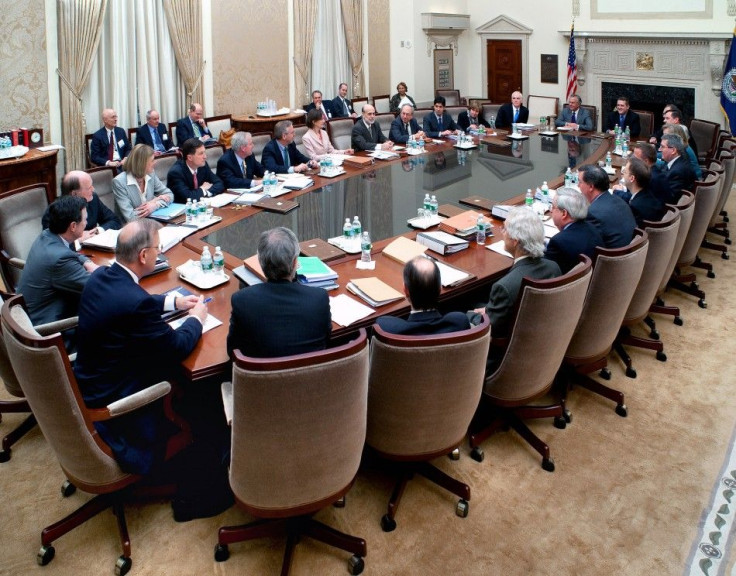FOMC Preview: Policy To Stay Put At April Meeting

Federal Reserve officials are expected to be in wait-and-see mode on extra stimulus at the April Federal Open Market Committee meeting this week, as little has changed since the March meeting to warrant policy changes, economists say.
The FOMC will conduct its policy meeting Tuesday and Wednesday, April 24-25. This is the second two-day meeting of the year and the second at which the committee will release the members' assessments of the appropriate timing and pace of policy changes via the fed funds rate. In addition, Chairman Ben Bernanke will conduct a press conference after the economic projections and policy assessments are released.
The FOMC will release its policy statement on Wednesday at 12:30 pm EDT. The projection materials containing the economic projections and policy assessments will be released at 2 p.m. And Bernanke's press conference will follow at 2:15 p.m. He will read a statement before taking questions from the press. This three-step sequence has the potential to create a modest amount of market volatility.
Members of the committee may express a bit more caution about the economic outlook given the recent disappointing labor market data and more optimism about the inflation outlook given that crude oil and gasoline prices have declined in recent weeks. But neither of these developments is significant enough to change the overall assessment of economic conditions, HSBC's chief U.S. economist, Kevin Logan, wrote in a note to clients Monday.
The Beige Book revealed most districts once again reporting either modest or moderate activity; overall, assessments of growth have improved only marginally since the start of the year.
The soft March payrolls report was clearly a disappointment, but still consistent with stating that labor market conditions have improved further since the prior meeting, with the unemployment rate declining to 8.2 percent in March. The main change would be to note that oil and gas prices are no longer rising, confirming the Fed's expectation of a temporary effect on inflation.
Economists expect the Fed's policy position to be the same as in March: an exceptionally low funds rate through late 2014, a continuation of the maturity extension program, aka Operation Twist, and continued reinvestment of principal payments on securities holdings.
As before, members of the committee will also express willingness to consider changes to the size or composition of its securities portfolio to promote a stronger economic recovery. It is very unlikely that they would close the door on further asset purchase at this point, Logan said.
Bernanke made it quite clear at the January press conference that additional quantitative easing was an option that was certainly on the table.
A number of central bank officials have suggested the economy would need to deteriorate, and inflation would need to remain below the 2 percent target, for the Fed to consider more stimulus in the form of bond purchases.
Further easing actions could be warranted if the recovery proceeds at a slower-than-expected pace, while a significant acceleration in the pace of recovery could call for an earlier beginning to the process of policy firming than the FOMC currently anticipates, Federal Reserve Vice Chairman Janet Yellen said in a speech in New York on April 12.
As a result, further easing is not imminent, but also not off the table later this year, as we expect Chairman Ben Bernanke's post-FOMC press conference will reveal, Michael S. Hanson, U.S. economist at Bank of America Merrill Lynch, wrote in a research note Thursday.
On the hawkish side, Dallas Fed President Richard Fisher and Minneapolis Fed President Narayana Kocherlakota expressed concerns over the risk of inflation on the economy. Neither Fisher nor Kocherlakota are among the five Fed presidents voting on the FOMC this year.
Fisher called the idea of more monetary stimulus a fantasy of Wall Street, while Kocherlakota urged earlier this month that the Fed should pull back sooner rather than later. I see no need for additional accommodation at this time, and I believe that conditions will warrant raising rates well before the end of 2014.
Also in focus will be Fed's push for transparency. All members of the Fed's subcommittee on communication have recently discussed different potential rules to clarify the Fed's policy choices. In March, several participants advocated a discussion of policy responses to alternative scenarios at a future meeting.
Markets will watch and wait to see if that discussion, or others on additional transparency moves, occurs in April, Hanson noted.
© Copyright IBTimes 2024. All rights reserved.






















